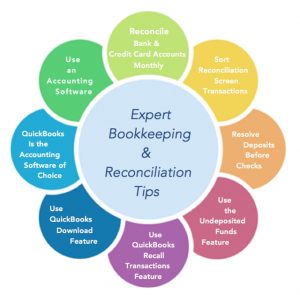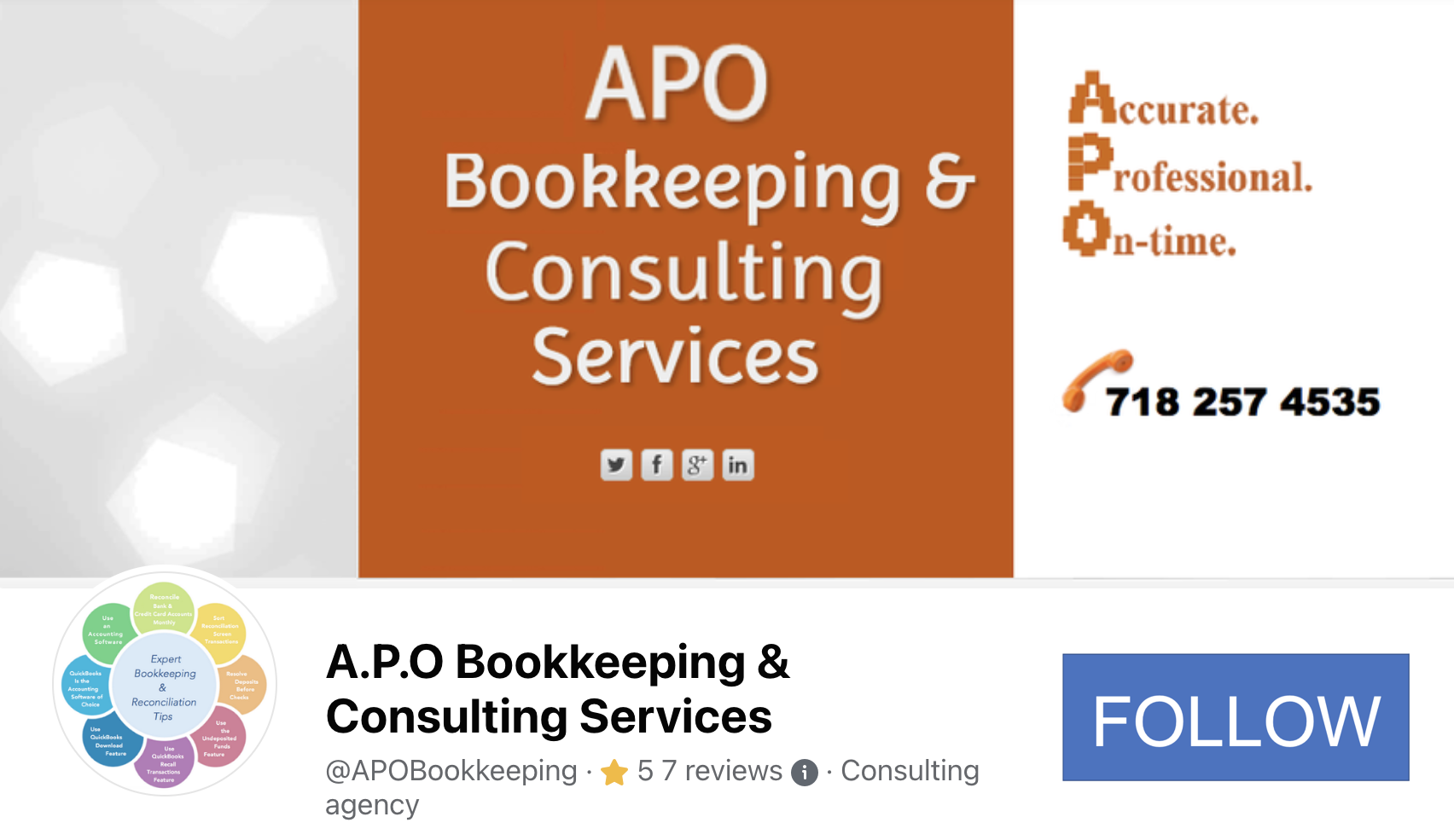by Eugénie M. Nugent | May 31, 2016 | Business Improvement, Business Tips

Photo courtesy of APO Bookkeeping
The fact that you are reading this means you have thought about it. But would you have been interested in a “cloud based” accounting and bookkeeping application a few years ago? Probably not! Like myself and many small business owners, you were probably still trying to get your arms around the cloud and doubting that you would ever entrust your most critical financial data to some outside company. But times have changed. Online, or cloud financial applications are slowly but surely becoming the norm, and many small business owners are taking notice, particularly because of their benefits.
There are many cloud accounting and bookkeeping applications available on the market to date for small businesses. Some of them are: QuickBooks Online, Cheqbook, Xero, FreshBooks, Kashoo, Zoho Books and Wave. Most of these programs are pretty simple to use, and with only the bare basics of accounting, anyone should be able to use them. These programs also make it easier to have someone else do your bookkeeping while you maintain your Invoicing and receivables simultaneously from anywhere there is an internet connection. They can be accessed on a smartphone, tablet, or computer. This means that you have options! You can outsource your entire bookkeeping and accounting processes, or elect to have specific portions outsourced.
Benefits of Cloud Accounting
1. Cloud Based Accounting is Safe and Secure
When it comes to your company’s finances, nothing is more important than keeping your sensitive information from leaking out, which could have disastrous effects on you and your business. With a cloud based virtual accounting solution, your data is stored on a secure server. When you need to send data back and forth, it is done using only the highest available level of encryption, which keeps the data from being read – even in the unlikely event that someone could intercept the transmission.
2. Cloud Accounting is “Always On”
O the convenience of easy access! One of the reasons that cloud based accounting is becoming so popular is that it provides a level of coverage that you could only get otherwise by hiring an entire accounting department. Most small businesses cannot afford the expense of hiring even one full time staff member, and will generally bring someone in to do the books on a part time basis as needed. That may only be once per month to a few days a month, which leaves a lot of gaps if there are critical needs on the off days. With these applications you have the option of using a virtual bookkeeper and even accountant, which will undoubtedly cost less while keeping your accounts updated. Even at nights while you sleep, your accounts can be updated. You can choose to have a team assigned to you by some of these companies for full coverage, if you prefer to have the same company personnel rather than other remote bookkeepers do your bookkeeping. Regardless of how you choose to handle your bookkeeping, using any of these cloud accounting applications will allow you and whomever you give permission, to have access to your data 24/7 from anywhere with an internet connection.
3. Cloud Based Accounting Applications are Versatile
Cloud based accounting applications have something that only the cloud can provide. Because these applications are located online, they are better able to be integrated with many other applications that are designed to work with them, offering customized solutions to various business needs. Ecommerce and payment processing solutions such as Shopify, Paypal, Square etc. work seamlessly with these programs. QuickBooks Online has the widest market of these software applications, and as such, there are many more applications available that can be easily assimilated with it.
4. Cloud Based Accounting Allows for Seamless Collaboration
Since these applications are cloud based and hosted, they allow for easy and seamless collaboration. You and your business partner, for example, may be in different locations but need to look at and discuss your numbers. These online programs make this possible!
Downside to Cloud Accounting
1. These applications often become overloaded and thus slow running, depending on the time of day. During regular business hours of 9 through 5 when most businesses are open and staff working in QuickBooks, there may be times when it becomes really slow.
2. Cloud based accounting applications are sometimes inaccessible. There may be times when you have work to do but the application is inaccessible or unavailable for any number of reasons.
3. You Cannot Backup Your “In the Cloud” Data. Because these applications are not on your system, you cannot backup your data, and will need to wholeheartedly trust these companies to have your data available whenever you need to access it.
Technology has advanced in a myriad of ways, and people who are not excited about the new way of doing things are forced to either move with the time, or be left behind. Many accounting software companies who started out with desktop accounting software are moving rapidly towards closing them out altogether. Although you may have purchased the desktop edition and it is yours to keep, you may not be able to use it the same way you usually do. For example, if you use your QuickBooks desktop software to generate payroll and depend on the updates from Intuit to get them done accurately, you will not be getting those updates anymore. If you are only using it for financial record-keeping, invoicing, etc. then you should be ok with it. Otherwise, you will need to switch to the cloud. Eventually that is the only option we will have! So, it is probably a great idea to get on board and transition sooner than later.
My Personal Preference
Desktop hosted applications. Call me old-fashioned, but I like to feel that I have control over my financial data. But what good is having the desktop software when they are no longer supported by their makers who strip away the minimal functionalities they have, such as the ability to email your Invoices through the software for quick payments, and generate your employees payroll?

by Eugénie M. Nugent | Dec 1, 2014 | Engaging Employees

Photo courtesy of:
© Monkeybusinessimages | Dreamstime.com
I have witnessed firsthand where employees go from nonchalant to concerned, activated employees. For many employees, their only reason for going to the job is merely the paycheck. They have zero interest in the company and as such very lackadaisical, and this outlook sets the tone for unhealthy customer service, stifled employee relations, an unmotivated work environment, and a stagnant or declining business. This is not a situation any business owner would like their business to be a part of, and thankfully, there are ways to not only energize your employees, but also connect them to your business strategies.
5 Step Approach To Utilizing Employees Full Potential
- Activating and mobilizing your employees
- Creating and implementing strategies that are geared towards business success with a theme of employee involvement
- Empowering your employees
- Opening and aligning the channels of communication
- Re-examining protocols and promoting continued collaboration
Step 1. Activating and Mobilizing Employees
You activate and mobilize your employees by giving them a voice, clear roles to play, and incentives. Studies have shown that humans are more likely to be attentive and receptive when rewards are in play. Essentially, in order to boost employees interest you can offer incentives for participation in both internal as well as external surveys. Surveys can range from individuals view of operation to customer satisfaction, as well as their social group stance on matters that are important to the particular business.
Shift your thinking to inspire your employees to be active in something that is about them. Give your employees business cards. Employees will start to feel like a part of the organization and not just a commodity for the company, and this will solidify their new stance of the business, and activate a drive to see the business succeed. Each time they hand out their business cards, your company gains new prospects who could quite possibly convert to new customers. Your equipping them with business cards allow them to market your business indirectly, while having a sense of pride. Employee activation is just as important as traditional external consumer-focused efforts. More than a paycheck, employees desire a sense of purpose, pride, and impact.
Step 2. Implementing programs and surveys and directly Connecting Your Employees to Your Business Strategies
After you have clearly conveyed your company’s purpose to your employees, you can start implementing programs that links them to your business strategies:
- Host brainstorming sessions and allow your employees to participate. Bringing together different perspectives harmoniously is important to leveraging individuals’ collective talents.
- Invite them to write articles for company blog. You can rest assured they will be broadcasting to their social networks the awesome work they are doing contributing to their company who values their input, which in turn converts to indirect marketing for your business.
- Create monthly or quarterly internal newsletters showcasing how your employees have helped to improve the company over a period, and putting forth additional plans for impending months. Also, communicate upcoming opportunities to your employees in your newsletters, as well as in a face-to-face meeting setting.
- Implement a mentorship program that allows seasoned employees to mentor newly hired ones. This will again give them a sense of purpose to the company, and show that you trust and value them. You can create a template they should follow and give them space to test their own learning methods.
Step 3. Employee Empowerment: You Can, and I Trust You To
Employees desire to feel appreciated and valued. When employees are involved in the equation, they will feel respected and as such exude a sense of loyalty and care for the organization. Consulting with employees help to promote a healthy working environment where all involved in the organization can benefit. Employees are in the everyday happenings of the company and as such, experience issues firsthand concerning customer relations for retail businesses, as well as internal controls that affect the organization. Without co-operation between employers and employees the chances of coordinating a successful healthy business is non-existent. In addition to empowering your employees with confidence and trust, you can create programs that advance them professionally, and subsequently give them room to implement strategies learned. As business owners, we all have to ensure we are offering learning and development opportunities on the job, and challenges to promote growth.
Step 4. Communicating Effectively: Speaking With, In Lieu of Speaking To
Effective communication is essential for the smooth running of the organization; communication that is not one-sided, but all-inclusive and understandable. As one great writer wrote, “The single biggest problem in communication is the illusion that it has taken place.” We cannot assume communication has taken place, and in order to ensure it has, all parties must be attentively involved in the process and in a reciprocative manner. When you speak to someone, you do not listen. On the other hand, when you speak with someone you speak as well as listen which is effective communication. Also, as business owners, it is imperative to make one-on-one time to speak with employees to find out what is on their minds. Do they have ideas for improving the business, or ways to promote a better workplace? What do they want to accomplish professionally? When employees feel the company is responsive to their concerns, and values their input, their desire to participate and contribute increases substantially. Improving interactions among employees as well as with management will strengthen morale, build team spirit, increase productivity, and create a cohesive, motivated workforce.
Step 5. Re-examining protocols and promoting continued collaboration
Based on company’s performance over a quarterly, biennially, or annual period, and employees feedback, reexamine issues affecting the company that can be changed and areas that can be improved. Foster a community of committed employees, and take all the steps necessary to promote continuous collaboration, and avoid complacency.
Setting an operational plan without consultation with employees disadvantages the organization because: 1) Lack of consultation fails to take advantage of all available knowledge and expertise and 2) Lack of consultation is most likely to make people feel left out which sets the tone for reluctance and negativity towards the emerging plan. Because employees are on the front line, they will affect the core of your business – your customers. Given the right atmosphere in which they feel valued and needed, they will exude confidence in their ability and it will shine through to the customers. What you will have is an employee-driven workplace with revitalized employees geared towards enhancing your company’s growth and development – collectively.
Your employees can make all the difference when it comes to growing your company. They produce, deliver, and manage your products and services day in, day out. This is why your HR strategy should include opportunities for training and recognition programs that keep your employees stimulated, strategic employees involvement programs, and clear cut communication channels which will all work together to keep your company thriving. Employees are really a reservoir of resource. Tap into them and watch your business grow.
What are your thoughts? Feel free to express in the comment section below.









